Author: Marshall Schott
IPA has held the craft beer popularity crown for a long time, and while certain preferred characteristics morphed over the years, the style was typically defined by its moderately assertive bitterness, noticeable citrus and pine hop aroma, clean fermentation, and a clear appearance. Even earlier regional variants from areas like the Pacific Northwest and Midwest of the United States were generally a play on a similar theme.
Then New England got involved.
I recall when pictures of hazy pints began flooding social media with people claiming this presumably yeasty mess was more characteristically akin to a glass of fruit juice than a typical bitter IPA. Noted as possessing a significantly restrained bitterness with a soft, creamy mouthfeel and heaps of hop flavor, it all sounded good, but the haze admittedly made it difficult for me to embrace. Then, in December of 2013, my brother sent me a fresh can of Heady Topper from The Alchemist, notably hazy Double IPA some credit as being the spark that lit the Hazy IPA (aka New England IPA) fire. It was definitely better than I expected, but I struggled to get past the murky appearance.
Then, other homebrewing friends I’d come to trust began writing about this style including Brian Hall prior to his affiliation with Brülosophy, Ed Coffey, Michael Tonsmeire, and Scott Janish. From them, I learned that the haze isn’t due to lazy or simply poor brewing practices, but rather a function of the process, which inspired me to start experimenting with the style. Through this, I’ve developed an appreciation for well-made NEIPA, which the BJCP recently recognized as a legit style with the following description:
An American IPA with intense fruit flavors and aromas, a soft body, and smooth mouthfeel, and often opaque with substantial haze. Less perceived bitterness than traditional IPAs but always massively hop forward. This emphasis on late hopping, especially dry hopping, with hops with tropical fruit qualities lends the specific ‘juicy’ character for which this style is known.
Given my initial assumption about NEIPA, I was excited to see how one made using an actual shoddy approach would turn out!
| BREWING THE BEER |
The recipe for this recipe was based somewhat on past enjoyable batches I’ve made, though more so on the ingredients I had on-hand at the time.
Short & Shoddy Hazy IPA
Recipe Details
| Batch Size | Boil Time | IBU | SRM | Est. OG | Est. FG | ABV |
|---|---|---|---|---|---|---|
| 5.5 gal | 20 min | 53.8 IBUs | 4.7 SRM | 1.055 | 1.014 | 5.4 % |
| Actuals | 1.055 | 1.01 | 5.9 % | |||
Fermentables
| Name | Amount | % |
|---|---|---|
| Pale Malt, Maris Otter | 11 lbs | 78.57 |
| Oats, Flaked | 3 lbs | 21.43 |
Hops
| Name | Amount | Time | Use | Form | Alpha % |
|---|---|---|---|---|---|
| Magnum | 10 g | 20 min | First Wort | Pellet | 12.9 |
| Mosaic | 30 g | 15 min | Boil | Pellet | 11.3 |
| Amarillo | 30 g | 5 min | Boil | Pellet | 10.2 |
| Citra | 30 g | 5 min | Boil | Pellet | 13.1 |
| Mosaic | 30 g | 5 min | Boil | Pellet | 11.3 |
| Citra | 50 g | 4 days | Dry Hop | Pellet | 13.1 |
| Mosaic | 40 g | 4 days | Dry Hop | Pellet | 11.3 |
| Amarillo | 30 g | 4 days | Dry Hop | Pellet | 10.2 |
Yeast
| Name | Lab | Attenuation | Temperature |
|---|---|---|---|
| House (A01) | Imperial Yeast | 74% | 62°F - 70°F |
Notes
| Water Profile: filtered Fresno tap with a heap of CaCl |
Download
| Download this recipe's BeerXML file |
At 10:27 AM one gorgeous spring morning, I began filtering tap water for this batch.
With the full volume of water in my kettle, I hit the switch to get it heating up then added a small mound of calcium chloride to up the soft mouthfeel and juicy character.
Next, I prepared the grains.
When strike temperature was reached, I incorporated the grains then checked to ensure the mash was at my target temperature.
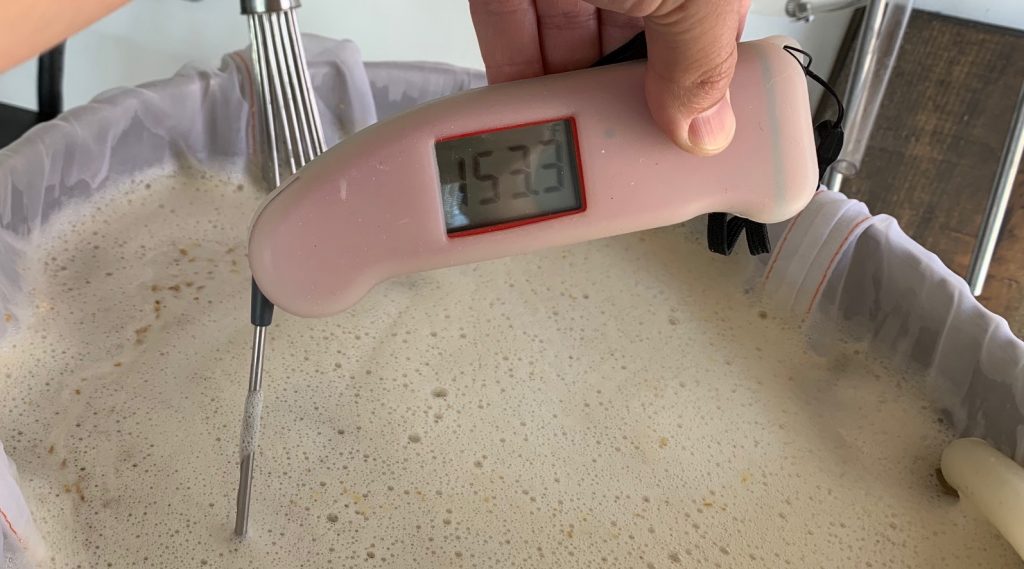
The mash was left to rest for just 25 minutes.
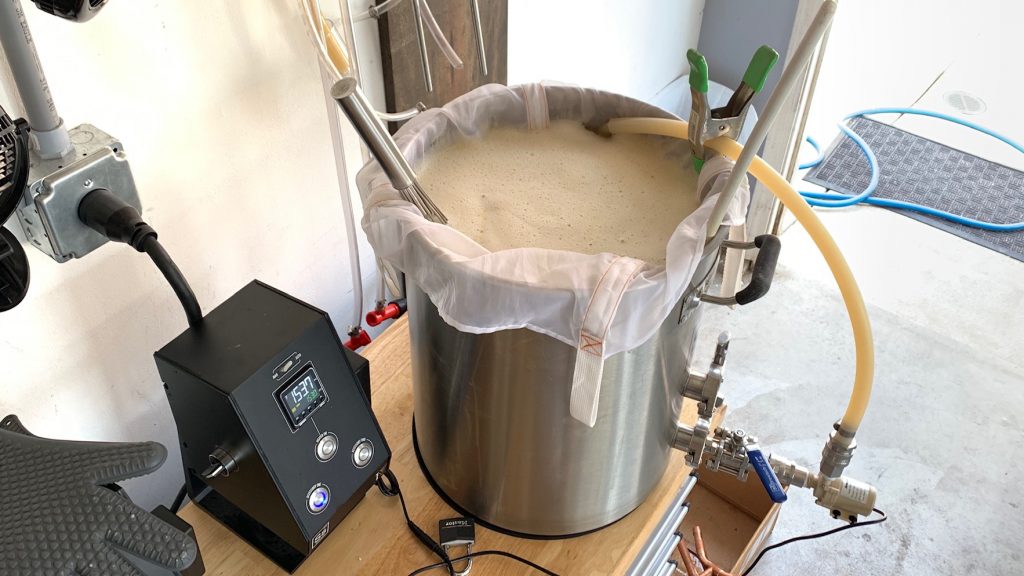
While waiting on the mash, I measured out the hop additions, placing the dry hops in an empty mylar bag that was stored in my freezer.
At the end of the mash rest, I removed the grains, giving the bag a gentle squeeze until the proper pre-boil volume was reached, then brought the wort to a boil.
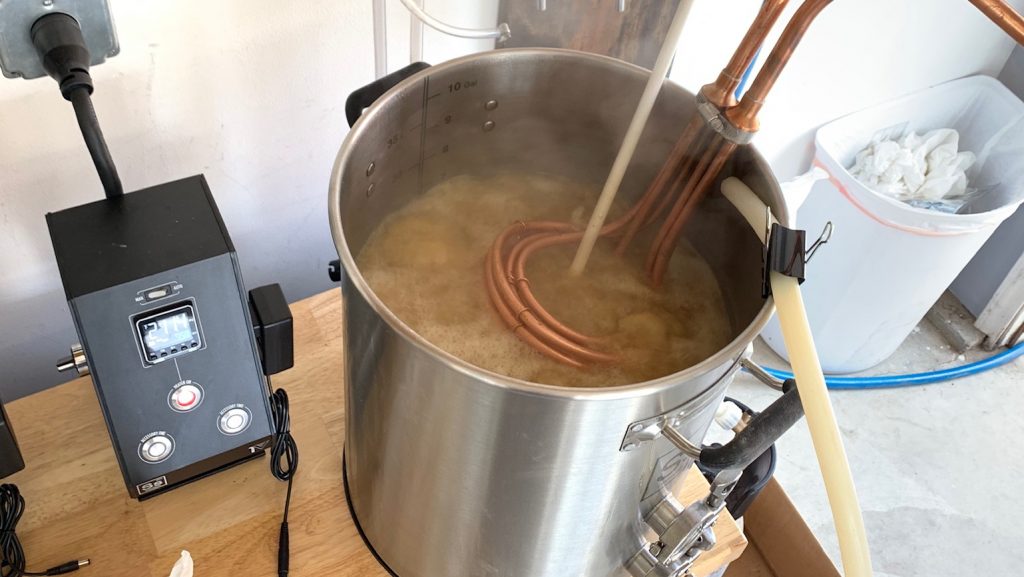
After a brief 20 minute boil, during which hops were added, I quickly chilled the wort with my IC.
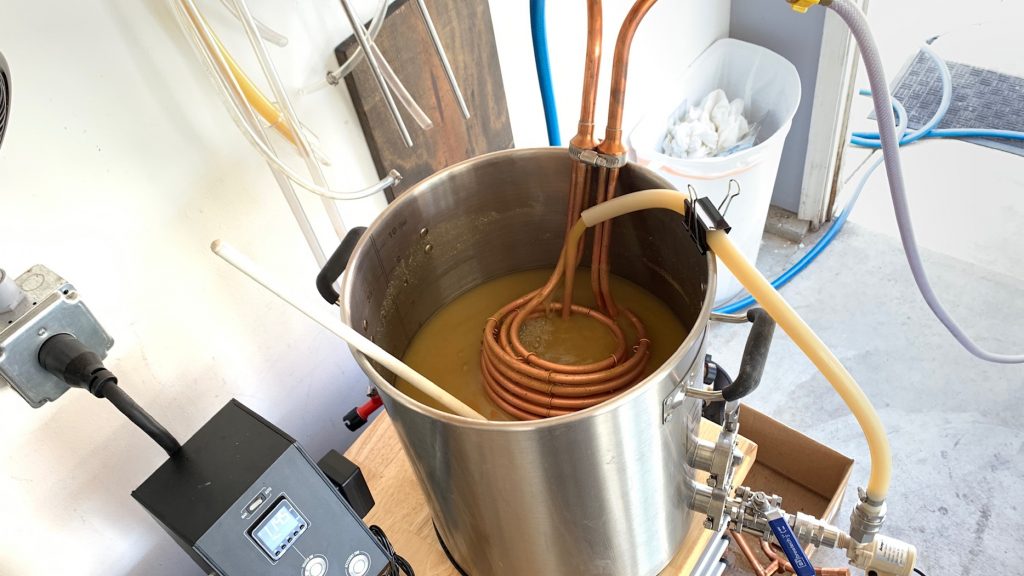
A refractometer reading confirmed the wort was right at my 1.055 OG target.
The wort was then transferred to a sanitized fermentation vessel.
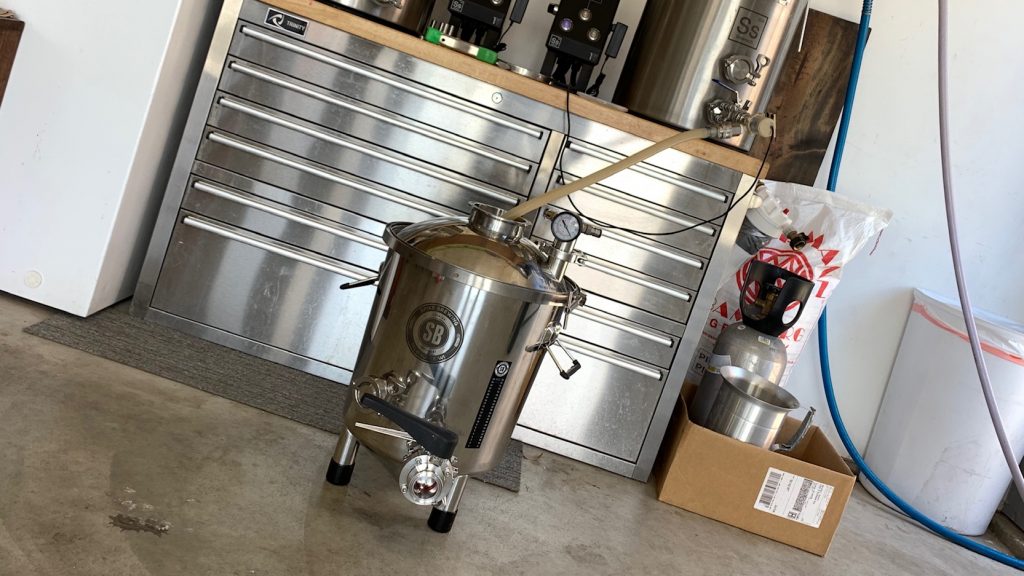
The weather in Fresno had been a bit cooler than normal, leading to colder tap water and better chilling efficiency. I immediately pitched a single pouch of Imperial Yeast A01 House into the 66°F/°19C wort.
I moved the filled fermentation vessel to my chamber controlled to 70°F/21°C and hooked up my nifty CO2 capture device. The time was 12:29 PM for a total brew day time of 2 hours 2 minutes.
I noticed kräusen atop the beer the following morning. Later that same day, about 31 hours after pitching the yeast, I added the dry hop charge.
Four days into fermentation, activity had all but fell off, so I took an initial hydrometer measurement suggesting FG had been reached.
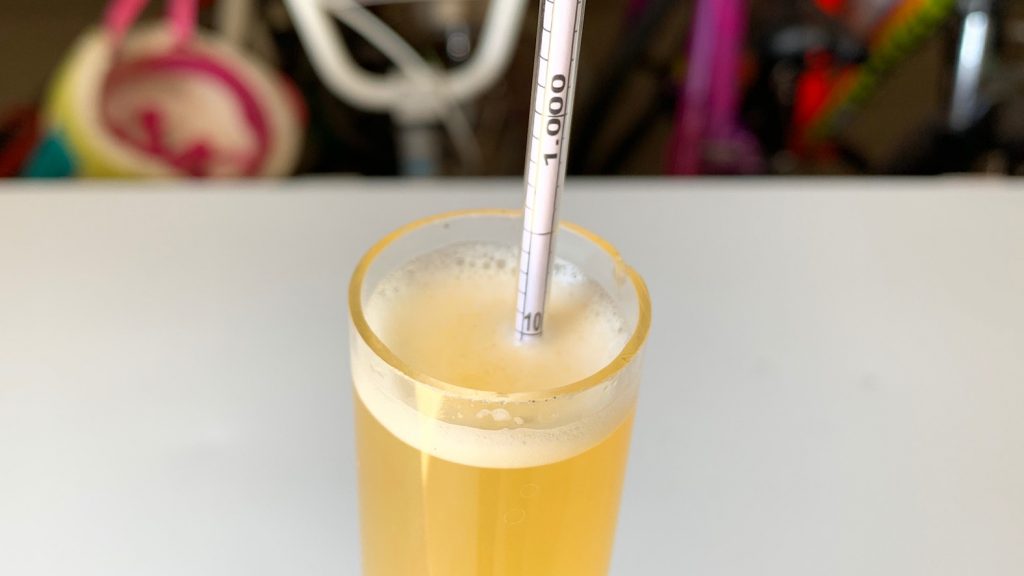
When a follow-up hydrometer measurements 2 days later was unchanged, I attached a CO2 tank to my fermenter, set it to 2 psi, then reduced the temperature in the chamber to 33°F/1°C for cold crashing. After 2 days cold, I pressure transferred the beer from the fermentation vessel to the naturally purged serving keg.
The beer was placed in my keezer and burst carbonated overnight before I reduced the gas to serving pressure. It’s commonly said that IPA, particularly of the hazy sort, is best served fresh, so I took a sample just a day after kegging.
To add to the shoddiness of this beer, rather than serving tasters the beer fresh, I let it hangout in my keezer for 4 weeks before collecting data. At this point, some of the opacity seemed to have diminished, though the haze was still readily apparent.
| RESULTS |
A total of 16 people of various levels of experience participated in this Short & Shoddy evaluation. Participants were first asked to identify the style they believed the beer to be based on their perception.
Tasters were then instructed to rate how hoppy, malty, and dry they perceived the beer to be on a 0-5 scale where a rating of 0 indicated “not at all” and 5 indicated “extremely;” these ratings were then averaged.
Tasters were provided a list of common hop, malt, and yeast characteristics then instructed to select from each the one they perceived as being strongest in the beer.
Hop Characteristics
Malt Characteristics
Yeast Characteristics
Next, participants were asked to indicate whether or not they detected any off-flavors in the beer; those who did were provided a list of common off-flavors and instructed to select the one they perceived as being strongest. Two tasters noted estery while one each felt they perceive metallic, oxidized, and alcoholic.
Tasters were then asked to rate how much they enjoyed the beer on a 0-5 scale where 0 indicated they hated it and 5 indicated they loved it.
Finally, the beer style was revealed to participants and they were asked to rate how representative it was on a 0-5 scale where 0 meant “not at all” and 5 meant “exactly.”
My Impressions: As far as hazy IPA goes, I have to say that I was rather pleased with this Short & Shoddy version. To me, the hop aroma maintained a good degree of pungency throughout the relatively long life of the keg, in fact a few people commented they could smell it while I was pouring samples for them. The bitterness was smooth and the mouthfeel was soft, while the simple malt bill mostly stayed out of the way. Most pleasingly, the beer never took on the oxidation flavors I so abhor in hazy IPA.
| CONCLUSION |
New things can be tough to embrace, in part because they’re unfamiliar and call into question that which we’ve come to identify as “normal.” Such seems to be the case with NEIPA, a style that, after hitting the scene less than a decade ago, initially elicited a fair amount of hate from craft beer veterans. Nowadays, of course, you can’t throw a rock without hitting a brewery that has 8 versions of hazy IPA on tap, and many initial detractors have since come around, signs that NEIPA is likely here to stay.
As any brewer of good examples will attest, the characteristic haze of NEIPA is a function of process rather than accident, and while the actual cause is still up for debate, what evidence does exists seems to suggest it is due to a confluence of variables such as the use of flaked adjunct and dry hopping at high kräusen. Other than these few unique methods, brewing a NEIPA isn’t much different than brewing any other style, leaving it susceptible to all the same process related off-flavors. In regards to the off-flavors noted by tasters, I wasn’t surprised with those who perceived esters, though I’m not convinced they weren’t more likely confused by the fruity hop character given they were blind to the style of beer they were drinking. As for the 3 people who reported perceiving metallic, oxidized, and alcoholic off-flavors, I’ve no good explanation, none of these stood out to me in the slightest.
As someone who has had a few bad experiences with oxidized NEIPA, I was most surprised by the fact that even after a full month in the keg, this Short & Shoddy NEIPA showed no perceivable symptoms of oxidation. I’m convinced this outcome is due to the fact I made the effort to reduce cold-side oxidation as much as possible, and while some may view this as less-than-shoddy, the fact I reused naturally produced CO2 is pretty badass, at the very least.
One last thing deserving of a comment is my choice of yeast. In my experience, the most common strains for NEIPA are those similar to Imperial Yeast A38 Juice and Imperial Yeast A04 Barbarian, which are said to be sourced from Boddington’s and The Alchemist, respectively. I had neither on-hand and went instead with Imperial Yeast A01 House because, like A38 and A04, it has its roots in England. There’s no way to tell for certain, but I feel this yeast left the beer with slightly more dryness than I’ve come to expect from NEIPA, and while I’ve enjoyed my experiences with those other strains, I definitely plan to play with A01 House more in the future!
If you have thoughts about this Short & Shoddy brew, please feel free to share in the comments section below!
Support Brülosophy In Style!
All designs are available in various colors and sizes on Amazon!
Follow Brülosophy on:
FACEBOOK | TWITTER | INSTAGRAM
If you enjoy this stuff and feel compelled to support Brulosophy.com, please check out the Support page for details on how you can very easily do so. Thanks!

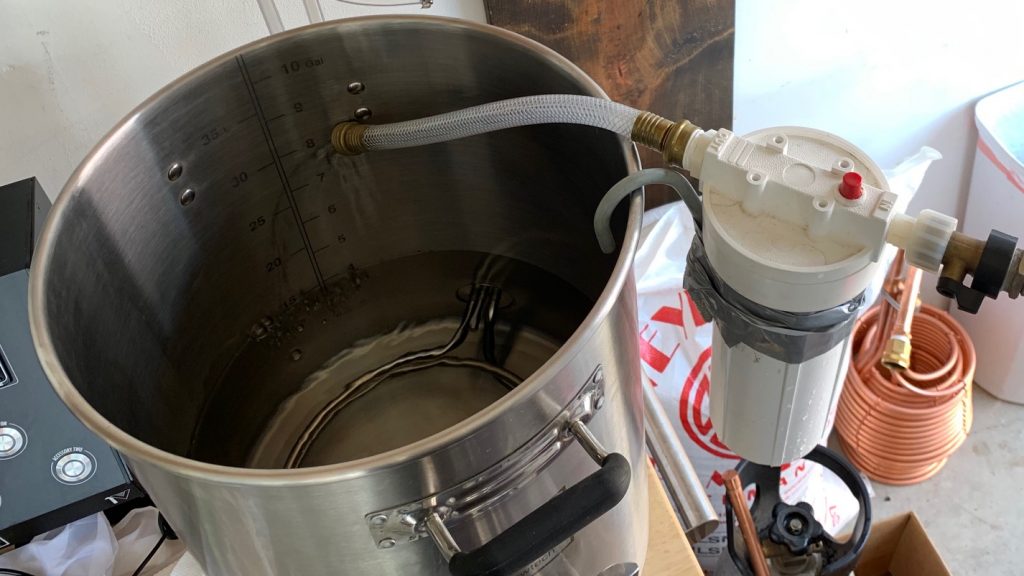
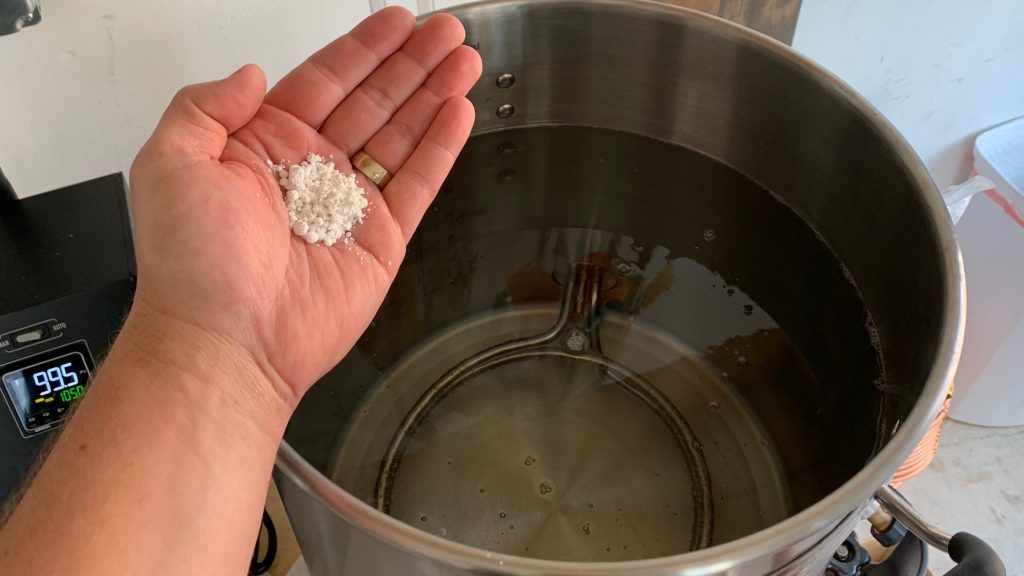

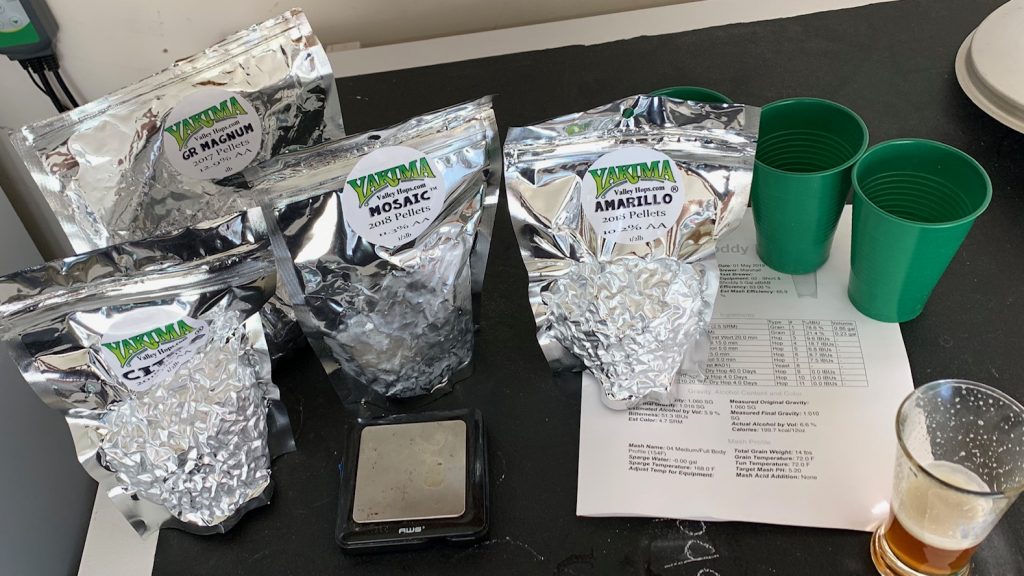
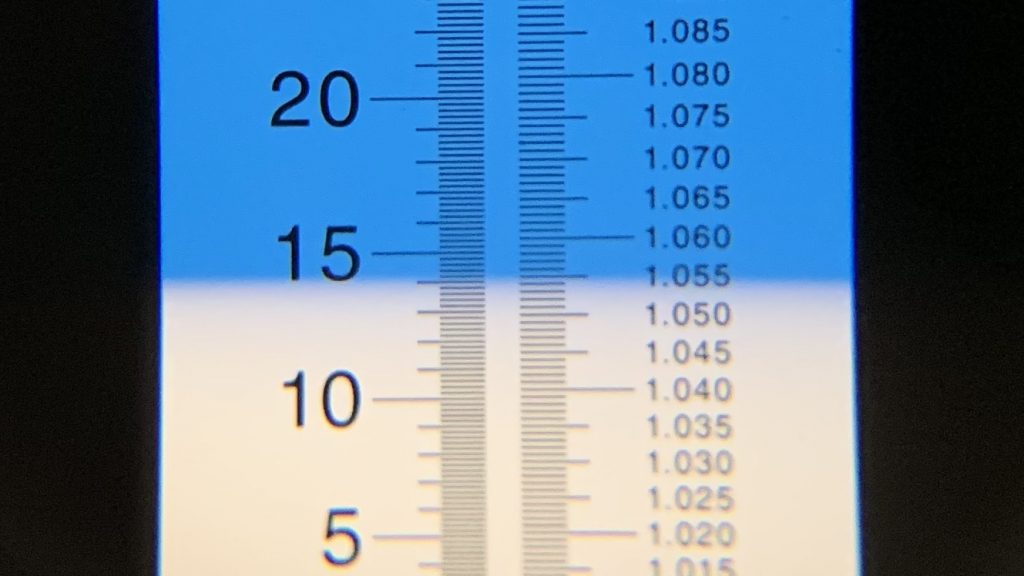
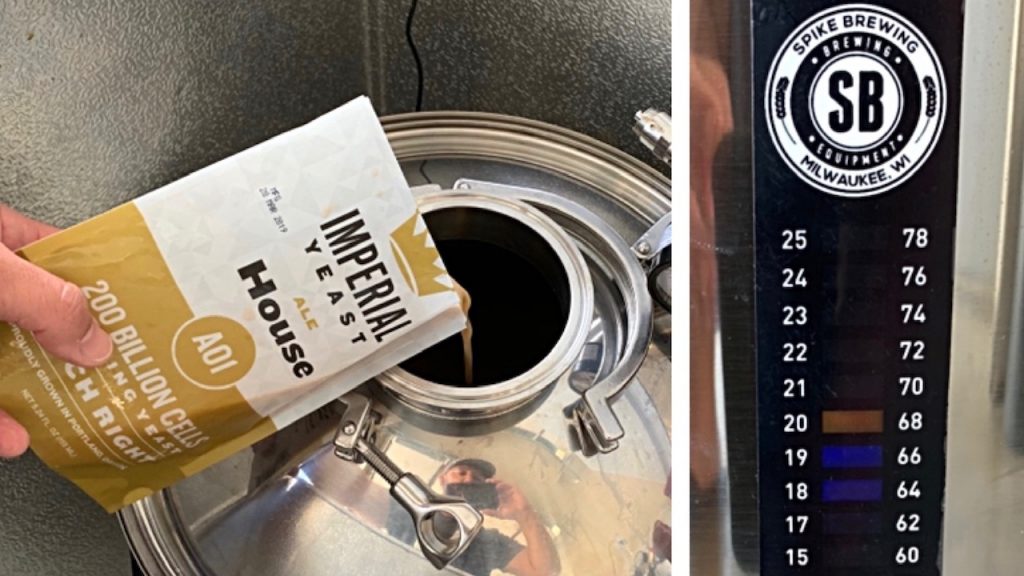
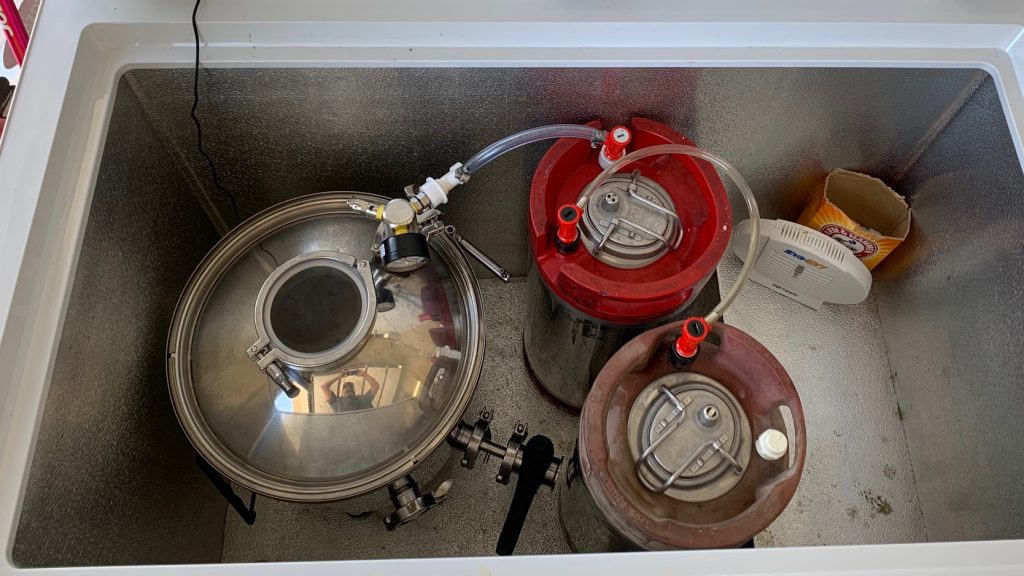
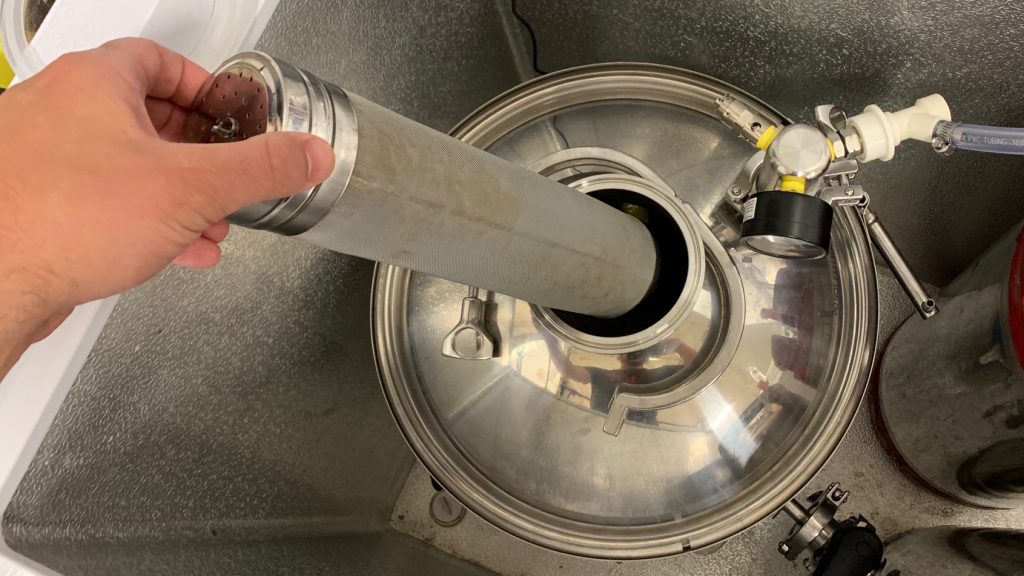
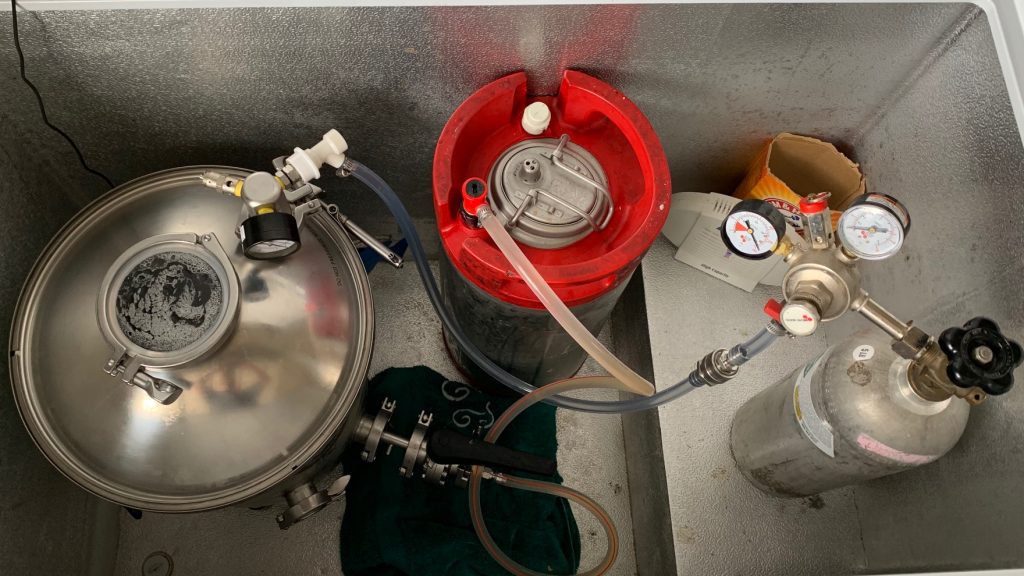
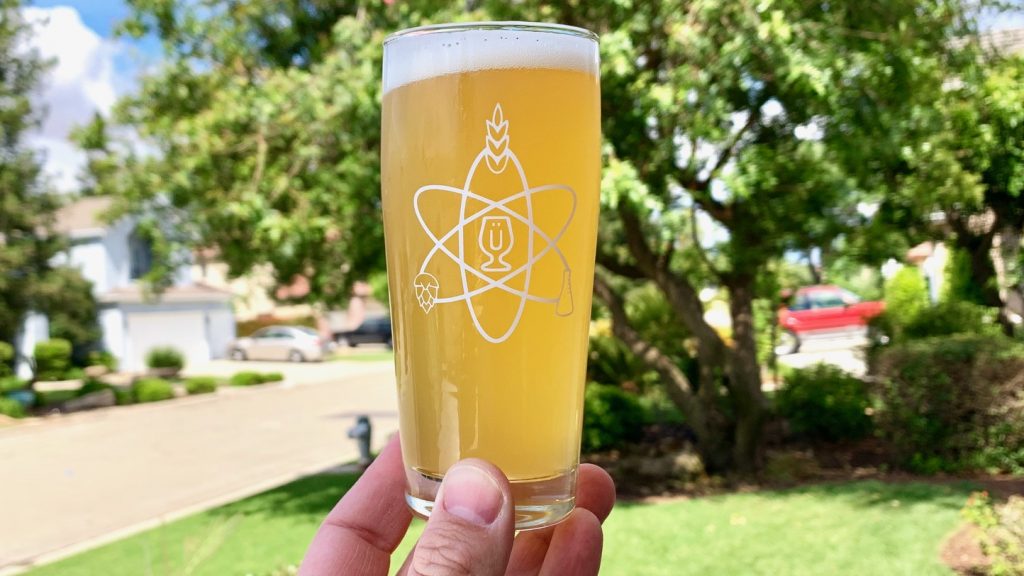
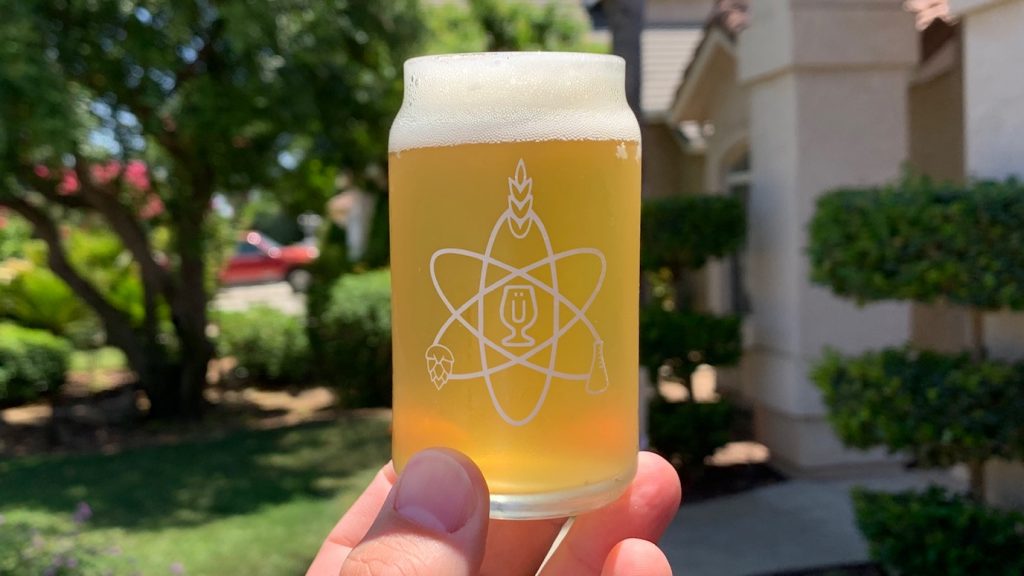
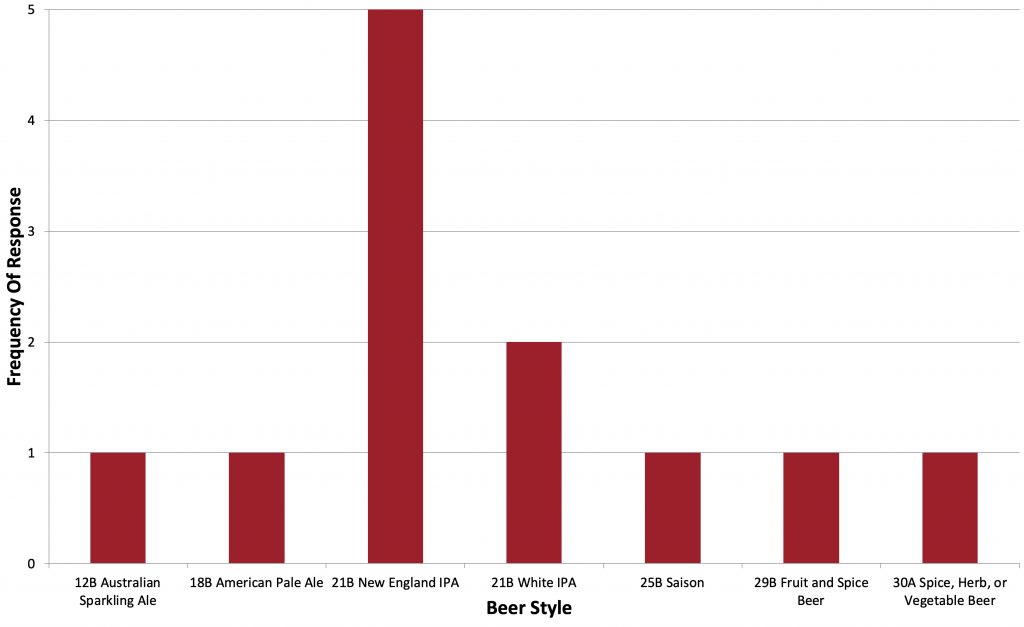
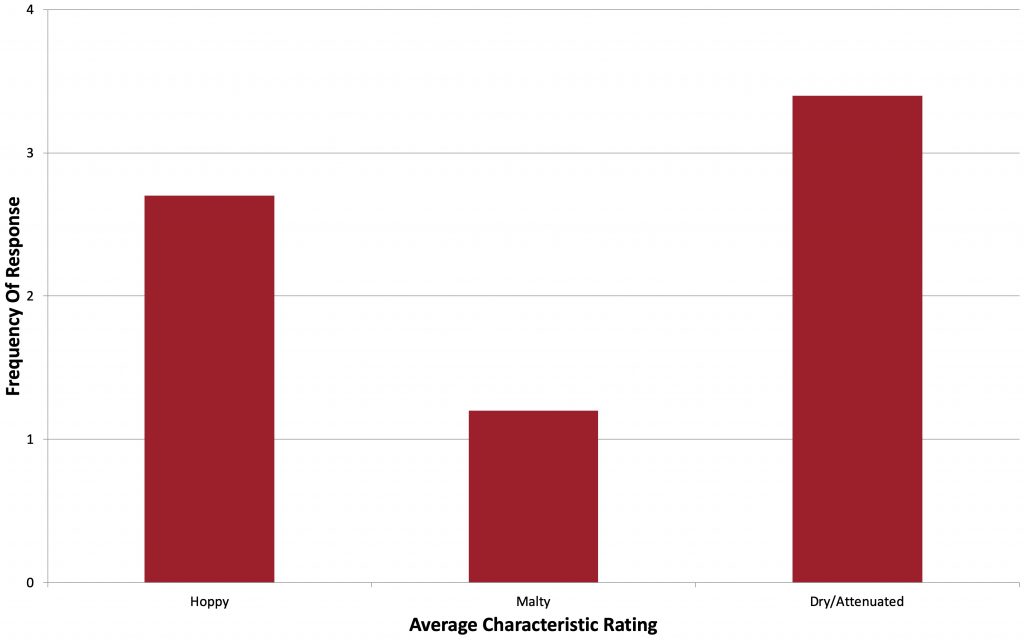
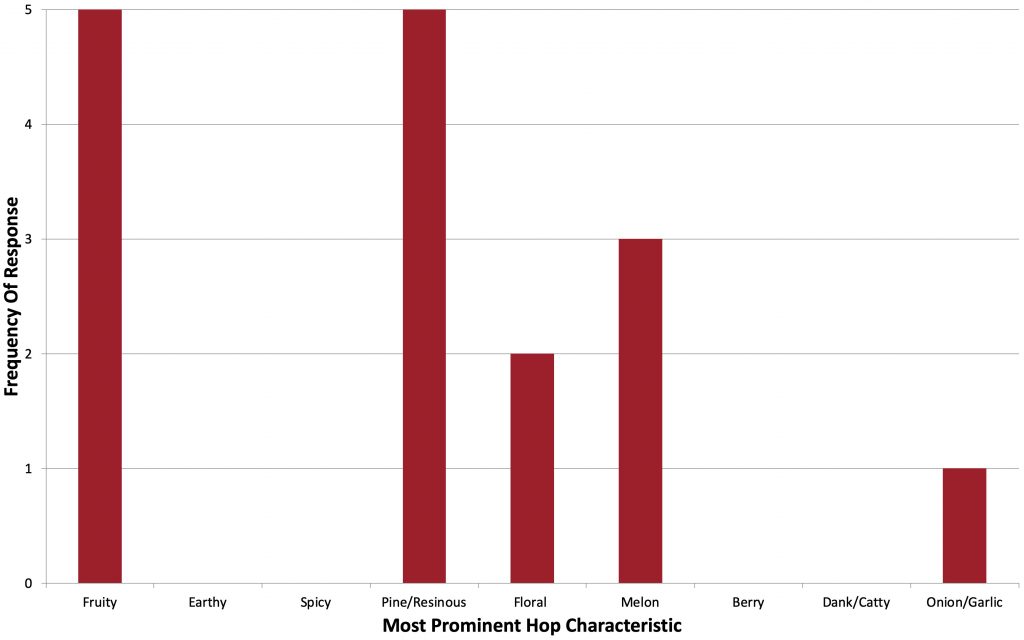
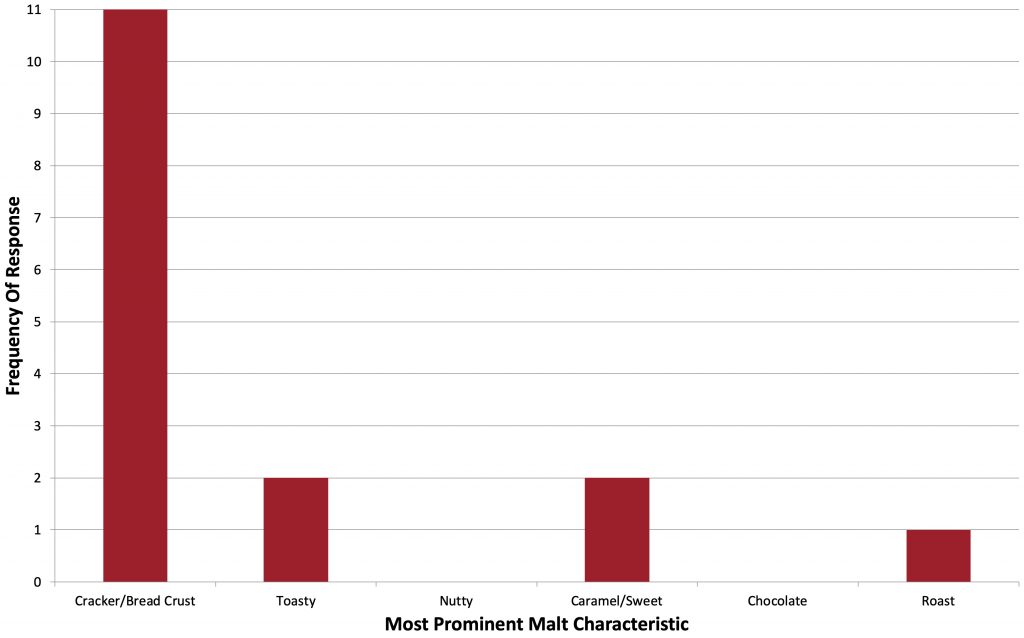
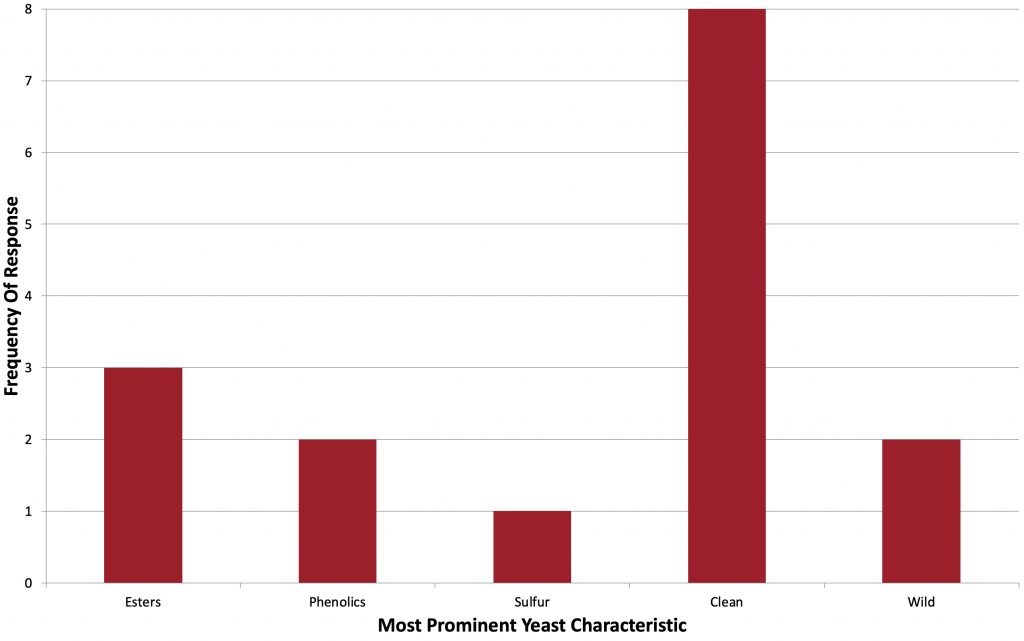
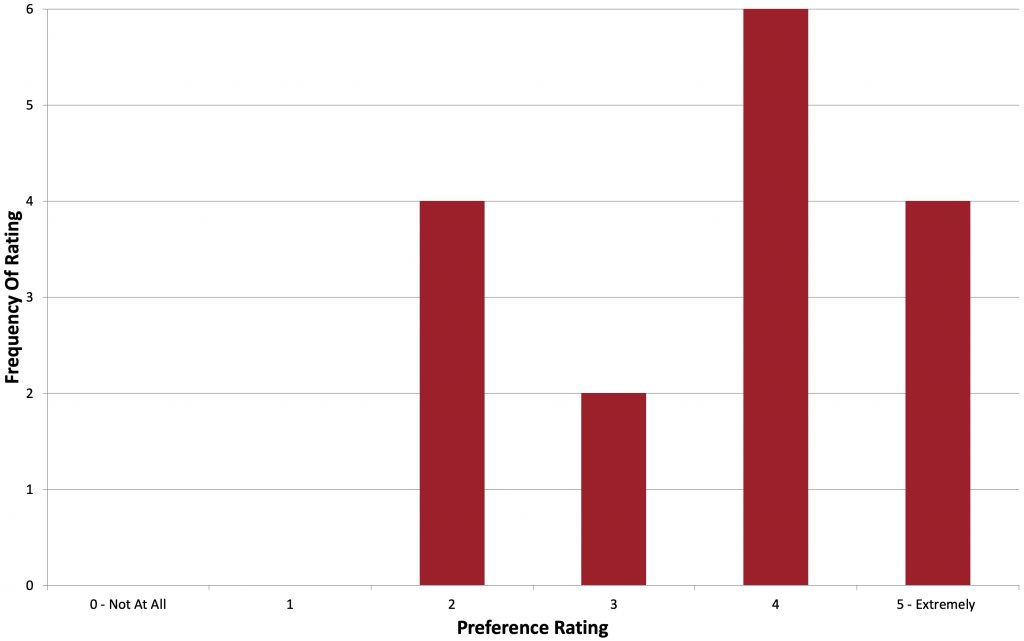
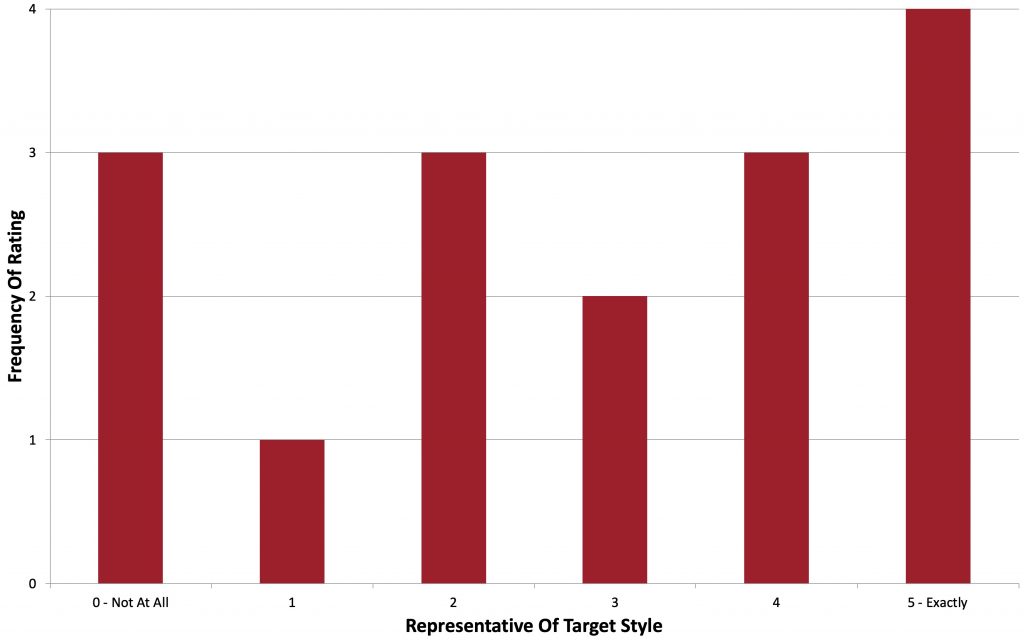









28 thoughts on “Short & Shoddy | Hazy IPA”
There’s a typo in the hop list, dry hop Mosaic has a time of 40 days.
You mean you hit your target OG of 1.055 not 1.065
Fixed.
Yikes! 40 day Mosaic dry hop? Either this is a typo or you are taking the short out of short and shoddy 😉
Wow! That was fast. You corrected the typo as fast as I could hit Submit.
Typo. Fixed.
Hey Marshall, I’m interested in your CO2 capture device. Is that detailed anywhere on the site? I looked in your table of contents but was unable to find it.
Thanks
Haven’t detailed it on the site yet, but we talk about it on a recent podcast episode on cold-side oxidation.
I think you did a good job explaining it on the podcast and your Flex+ review here:
https://brulosophy.com/2019/06/13/spike-brewing-flex-fermenter-product-review/
It was enough info for me to replicate. My sight glass leaked under pressure so now that this is fixed, I’m looking forward to trying it again on my next batch this weekend.
Where can I get more info regarding how you, “reused naturally produced CO2”?
Haven’t detailed it on the site yet, but we talk about it on a recent podcast episode on cold-side oxidation.
Marshall, every time you start in on the historical background of IPA lately I cringe. “Then New England got involved?”. Huh?! You make it sound like there were no IPAs in New England prior to NEIPA. My neighbor and I used to steal his dad’s Ballantine IPAs when we were kids in the 70s. You might think that’s a weak point since we’re talking about craft beer and Ballantine at the time was an east coast macro, but if you read Mitch Steele’s IPA book you discover that beer was the inspiration for the early craft IPAs by Anchor and Sierra Nevada. Ironically he also says that origins of the Chico strain are from Ballantine as well. Craft brewers in New England started making IPAs 20 years before NEIPA hit the scene. My takeaway from Mitch’s book, published just before the haze craze started, is that this East Coast / West Coast distinction comes from over simplified marketing hype.
I’m just being cheeky.
And I’m just being picky. I did read the rest of the article and found it informative and inspiring! Probably should have lead with that. Keep up the good work!
Love you, boo. See you tonight?
What is your usual hit to efficiency when you do the shortened mash? Would love to try it, but I’m not sure what the likely hit to efficiency would be and how much to increase my fermentables to hit target og.
I typically hover around 68-72% BH when doing 60 minute mashes; for 25 minute mashes, my BH is closer to 58-62%.
Always 1 person who tastes roast in everything 🙂 It looks like you are using one of the tan pumps now for recirc during mash & chilling. How did you like that? Would you recommend it? Looks like a nice simple setup with the qd right to the kettle out.
I like it a lot, very simple and not expensive at all. Here’s the one I bought: https://amzn.to/30RkbUw
Mosaic hops for 40days a typo I presume? Any info on why you’re using the pump during mash and cooldown?
I was curious about the pump, the efficiency % and the co2 capture device. All 3 questions I had were posted and answered in the comments section hahahahaha!! Beer minds think alike. Well done.
Yep I thought you wern’t a pump guy Marshel. I see you recirculate whilst chilling as well ? Did you leave it on throughout the boil or switch it on with 10 to go to sanitize? I used to run one of these but upgraded to a magnetic drive pump. But for a little unit they sure do push some wort for you!
Switched it on at 10 left to go.
As a proud Masshole (and Mash Hole), thank you for at least acknowledging it’s a New England IPA and not this BS “Northeast” IPA that New Yorkers are trying to foist upon us. They hate us cuz they ain’t us. Yankees suck. 😉
Hey Marshall. When you say a heap of calcium chloride, roughly how much do you mean? Cheers!
I’d guess 10-15 grams.
I wonder if some of the off-flavors (at least maybe metallic/alcoholic) people described could actually be attributed simply to bitterness. I could see how those perceptions could be confused, especially with the recent complaints of “hop burn” that some people are experiencing with NEIPAs.
Hi Marshall!
I would love to have a go at this recipe, the last couple of short and shoddy beers I’ve made have come out really well (currently drinking my last bottle of British brown).
I have a couple of questions about this brew… in true short and shoddy fashion I have different hops on hand, Mosaic, Galaxy and Simcoe. I’m thinking of using them in equal quantities, what do you think? Grain bill, I have malted oats, would this work?… I have a pack of imperial Loki which I really want to have a go with…is 30’C the kind of ball park fermentation temp I should be going for? Do you build the same cell count for Loki?
Sorry for a million and one questions…. Any input would be greatly appreciated.
Prost!